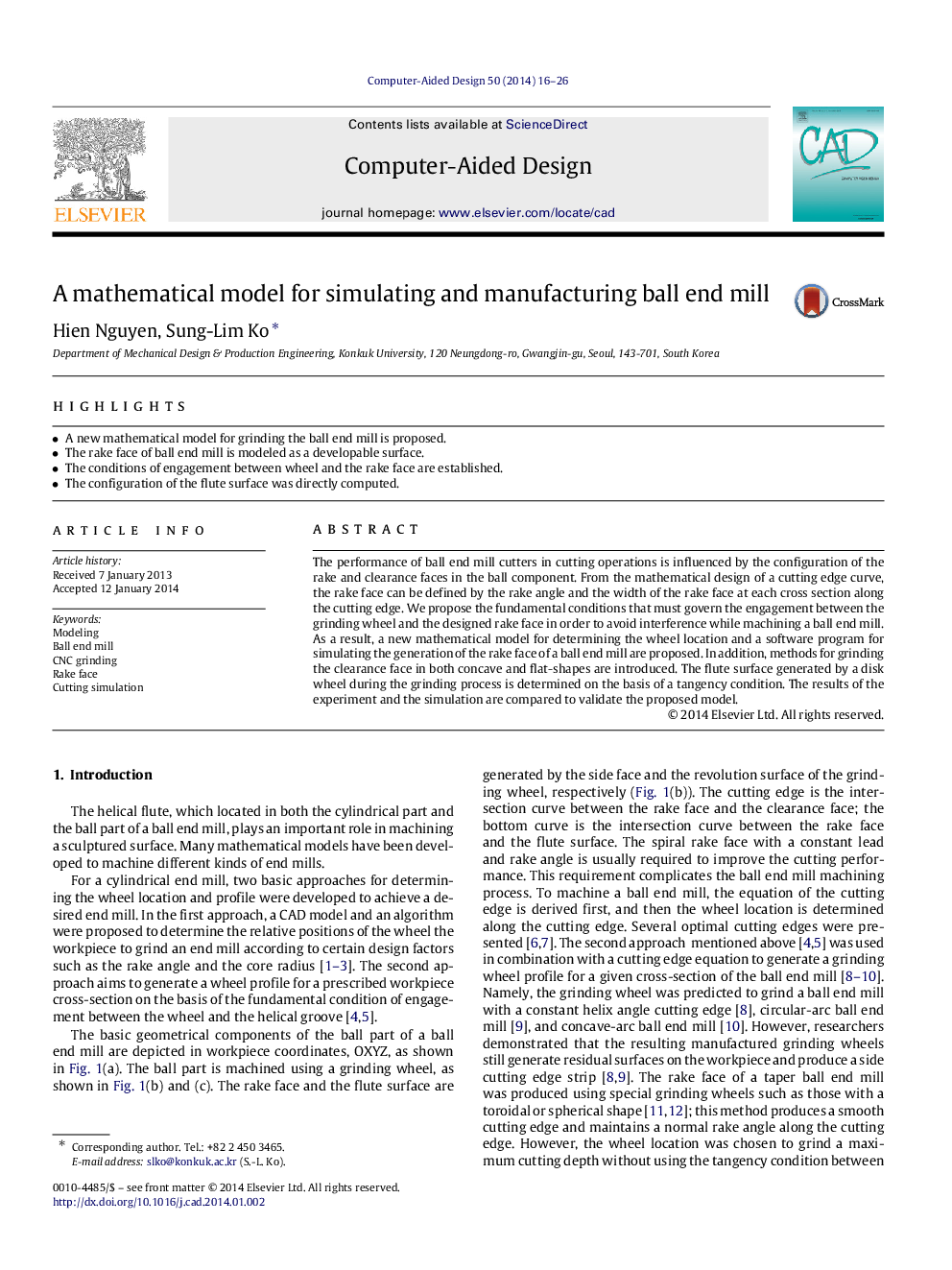| Article ID | Journal | Published Year | Pages | File Type |
|---|---|---|---|---|
| 440085 | Computer-Aided Design | 2014 | 11 Pages |
•A new mathematical model for grinding the ball end mill is proposed.•The rake face of ball end mill is modeled as a developable surface.•The conditions of engagement between wheel and the rake face are established.•The configuration of the flute surface was directly computed.
The performance of ball end mill cutters in cutting operations is influenced by the configuration of the rake and clearance faces in the ball component. From the mathematical design of a cutting edge curve, the rake face can be defined by the rake angle and the width of the rake face at each cross section along the cutting edge. We propose the fundamental conditions that must govern the engagement between the grinding wheel and the designed rake face in order to avoid interference while machining a ball end mill. As a result, a new mathematical model for determining the wheel location and a software program for simulating the generation of the rake face of a ball end mill are proposed. In addition, methods for grinding the clearance face in both concave and flat-shapes are introduced. The flute surface generated by a disk wheel during the grinding process is determined on the basis of a tangency condition. The results of the experiment and the simulation are compared to validate the proposed model.
